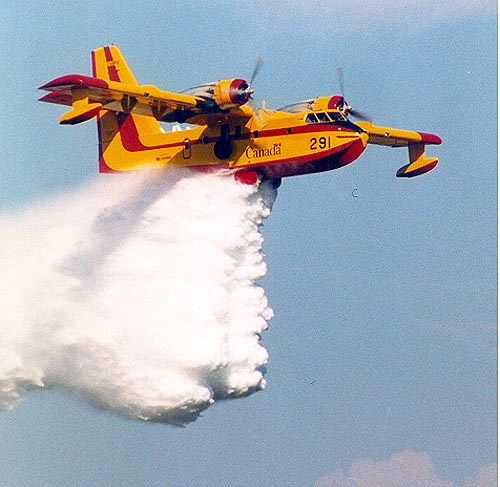Ahhh, yes, the coffee zombie...I know him well.
He haunts my bathroom mirror every morning!
Morning Jinxy. How's the new grandbaby doing?
Column from Kent Biffle in the Dallas Morning News about military bands (and more) on the Texas frontier. Good timing on your choice of subjects.
The ins and outs of forts
01:29 PM CDT on Saturday, October 18, 2003
By KENT BIFFLE / The Dallas Morning News
An Apache-chasing trooper sits atop his horse on the parade ground below the high cliffs at Fort Davis. The book jacket grabs your attention like a bugle call.
Editor Elizabeth Cruce Alvarez of the Texas Almanac 2004-2005 is marching to the bookstores to a martial beat. In today's warlike climate, she salutes Texas' warlike past.
New to the post, she performs like a veteran.
The 62nd edition of the venerable Texas Almanac is crisply written and easy to read. It's a book that often shares shelf space with the dictionary and the Holy Bible.
The Dallas Morning News, flagship newspaper of Belo Corp., publishes the Almanac. Hardcover is $19.95, paperback $13.95 (800-826-8911 or www.texasalmanac.com).
Texan Bart Forbes created the trooper on the cover. An acclaimed illustrator, he has designed 20 postage stamps - each pricier, I guess, than the previous one.
Choice nuggets
The 672-page compendium opens with a revealing report on Texas frontier forts and the Indian raids they seldom deterred.
Beth Alvarez and her associate editor, Robert Plocheck, compiled a trove of choice facts that will delight Texans and confound critics.
Speaking of critics, U.S. Army Lt. Col. William Grigsby Freeman doubled in brass buttons as a music critic.
Bryan Woolley of The Dallas Morning News joined the colonel, figuratively, on his 1853 tour of army posts on the border and frontier.
Writer Woolley recorded the colonel's comments on easily forgotten, misbegotten posts like Fort Ewell (La Salle County):
"Indeed, a less inviting spot for occupation by troops cannot well be conceived."
Fort Phantom Hill (Jones County) got a thumbs down. "The aspect of the place is uninviting. No post visited, except for Fort Ewell, presented so few attractions."
A number of recruits hadn't even learned to march. Fifty men didn't have weapons - although stuck out there smack in Comanche country.
Military music
The site of Fort Brown (Cameron County) was first thought to be a healthful one, he remarked, although in 24 months "it has been visited by four epidemics - yellow fever, cholera and the dengue twice." As 1852 ended, at least 189 of the fort's 459 men were down with mosquito-borne dengue.
At Ringgold Barracks (Starr County), Freeman was pleased to find a reading room "with a number of well-selected books and newspapers for the use of enlisted men."
Someone with unhairy ears once declared "military music" an oxymoron. But Freeman dug it. Me, too.
Not all the bands he heard were ready to tour. At Fort Inge (Uvalde County), he noted sourly, "The regimental band was very small and not mounted."
He gave a rave to the Fort Terrett (Sutton County) band, which "though small is quite good and does much to relieve the monotony of garrison life at an isolated frontier station."
His was an antebellum tour. A glee club and ensemble known as the Jolly Blues at Fort Richardson (Jack County) arrived after the bellum, as did musicians at Fort Concho (Tom Green County).
Once Fort Concho's band tuned up, the forks of the Concho were ever alive with the sound of music. Ask historian Bill Green. He wrote a book titled The Dancing Was Lively: Fort Concho, Texas: A Social History, 1867-1882.
Former Almanac editor Mary G. Ramos came out of retirement to write about the hard life of Army families: "Women at the Frontier Forts." She told readers about the lusty laundresses:
"The army furnished lodging and food. Each soldier paid the laundress for her services. ... A hardworking laundress could earn between $30 and $40 per month, compared to $16 per month paid to an enlisted man. Some laundresses worked as prostitutes to earn extra money, which prompted the assistant surgeon at Ringgold Barracks to suggest that troops wash their own clothes, since half the patients in the hospital were there because of venereal diseases transmitted by the laundresses. ..."
If you're traveling out San Angelo way, remember that some say Fort Concho is haunted - maybe by laundresses. On Halloween night, the post will provide ghostly tours, grownups $3 and kids $1 each. There's parking north of the barracks on Flipper Street, which happens to be named for Second Lt. Henry Osian Flipper, the first black graduate of West Point.
Fixing the record
Writer Woolley tells how Col. William Rufus "Pecos Bill" Shafter charged Lt. Flipper with embezzling commissary funds at Fort Davis (Jeff Davis County). Defendant Flipper contended he wasn't guilty. Eventually, a court-martial acquitted him of embezzlement but convicted him of that highly flexible offense "conduct unbecoming an officer."
Mr. Woolley called it the "most notorious case of racial prejudice in the frontier army."
In 1976, the Army "corrected" Flipper's records, awarding him an honorable discharge, dated June 30, 1882 - the day of his dishonorable discharge.
Dead since 1940 and with his records "corrected," Henry O. Flipper didn't really need a pardon, but in 1999, President Bill Clinton - the great pardoner - pardoned him anyhow.
Major forts-to-be Concho and Bliss (El Paso County) were too young to entertain gadabout Freeman. He didn't review scenic Fort Davis (Jeff Davis County), established for its "pure water and salubrious climate."
Fort Davis homeboy Woolley writes about the Indian-fighting Buffalo Soldiers at Fort Davis and the Army's black Seminole Scouts, based at Fort Clark (Kinney County). During the Indian wars, four of the Scouts earned the Medal of Honor, America's most prestigious military decoration.
One of the Scouts had a role in one of the frontier's strangest tales, a deadly encounter between two Medal of Honor recipients - a onetime bugler of Company L, Sixth Cavalry, and a former Scouts private.
Bugler Claron Windus was an odd hero. During the Civil War, at age 15, he talked his way into Union ranks as a drummer boy.
After the war, in 1867 at Fort Belknap (Young County), he and another private deserted, along with four cavalry horses. He was arrested a fortnight later. His court-martial sentence was a year at hard labor and forfeiture of all pay. Exactly a year later, he returned to duty. And, in 1870, he was awarded the Medal of Honor for heroism at the Battle of the Little Wichita. Troopers from Fort Richardson (Jack County) were badly outnumbered but not outfought by hundreds of Kiowa warriors. Honorably discharged in 1871, he tried various civilian jobs.
Adam Payne (or Paine) was said to be a descendant of slaves owned by Seminole Chief King Payne. He enlisted in 1873. For repeatedly risking his life in an Indian fight at Quitaque Peak (Briscoe County), he earned a Medal of Honor.
Discharged in 1875, he was soon in trouble in Cameron County, where he stabbed a young cavalryman to death in a drunken fight. Fleeing a murder charge, he took refuge in Brackettville's Seminole village. Local lawmen suspected that the villagers were harboring fugitives. A tipster told the Kinney County sheriff's office that the former Scout and another fugitive named Frank Enoch were among the wanted men who used the village as a hideout.
At an 1876 New Year's Eve dance in the Seminole settlement, Kinney County Sheriff L.C. Crowell showed up with two deputies. One was Claron Windrus. With guns leveled and badges displayed, the trio announced their official intentions.
Resisted, shot
Quickly, the lawmen forced a number of wanted men to line up to be shackled. But the most wanted of the bunch, Payne and Enoch, resisted. In the clash that followed, Windus, 25, began firing his shotgun, killing Payne instantly and mortally wounding Enoch.
Payne, 34, was buried in the Seminole Cemetery in Brackettville. And the unpredictable life of Windus returned to abnormal. He removed his deputy's badge to become Kinney County tax assessor.
Marrying well, he acquired vast land holdings.
The drummer boy, horse thief and Medal of Honor recipient died in 1927 at age 76. He was buried in Brackettville's Masonic Cemetery, a rich man.
How rich?
He owned Kinney County's first indoor plumbing.
Kent Biffle is a regular contributor. E-mail him at
kbiffle@dallasnews.com.
She's doing wonderful! I'll try to have a Halloween costume picture up this evening or tomorrow. She's really a sweetheart, gaining weight like a champ, and starting to sleep longer than an hour at a time. Her Momma is flat worn out.
Thanks texas booster.
Yeah, what timing. lol.
Music was so important and the frontier folk flocked to hear it. I imagine we are so used to hearing it whenever we choose it's difficult to imagine what it was like to have none really, unless someone had the ability to play it. No wonder they would use washboards. Just to make music.
I will admit the silence they must of enjoyed would be nice to "hear" nowadays though.
Thanks for your post in the Foxhole today.
Hey, she'll be fine. I wasn't given a middle name at all so at least Piper will have a choice of names to use, but I bet she sticks with Piper. It's a cool name.
Good news and Good Morning w/w.
Mornin' SAM. I love the last verse of the Marine's Hymn. It's just like them to add that!
Morning E.G.C. My birdbath was frozen over this morning.
Morning Mayor.
The Military Cross for raising morale? I don't know about that one.
Thanks for the link Oldeconomybuyer.
Morning Feather. I'm ignoring the double post. ;-)







